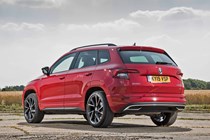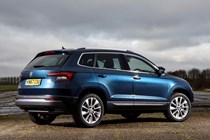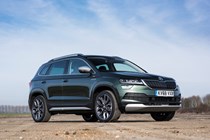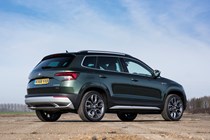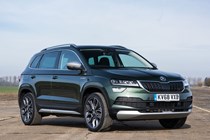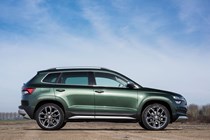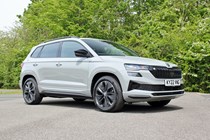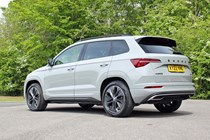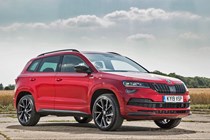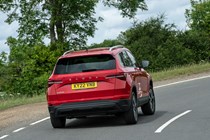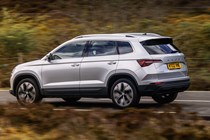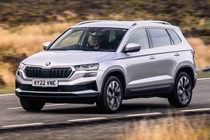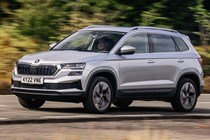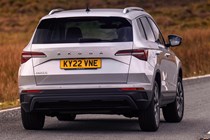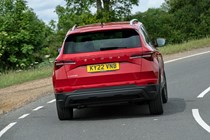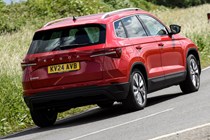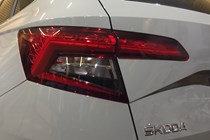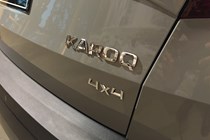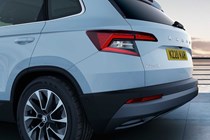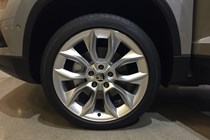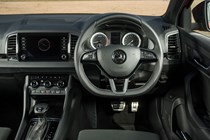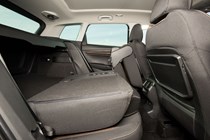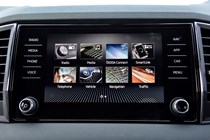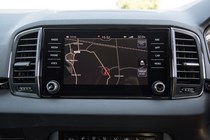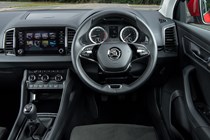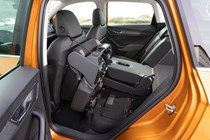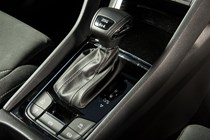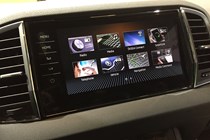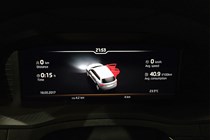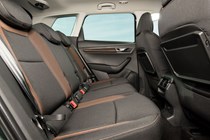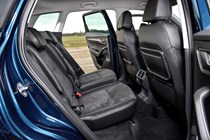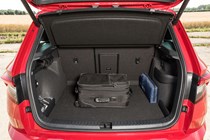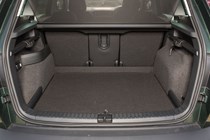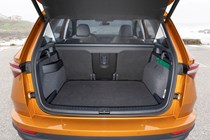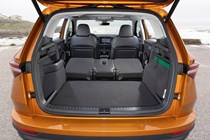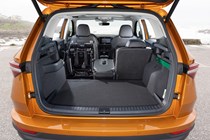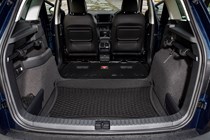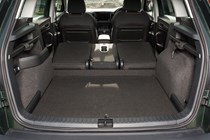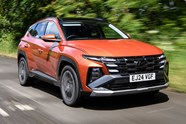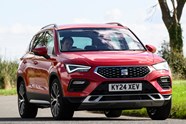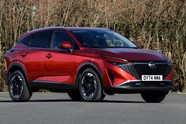
Skoda Karoq Review: Sensible SUV that still outsmarts its rivals
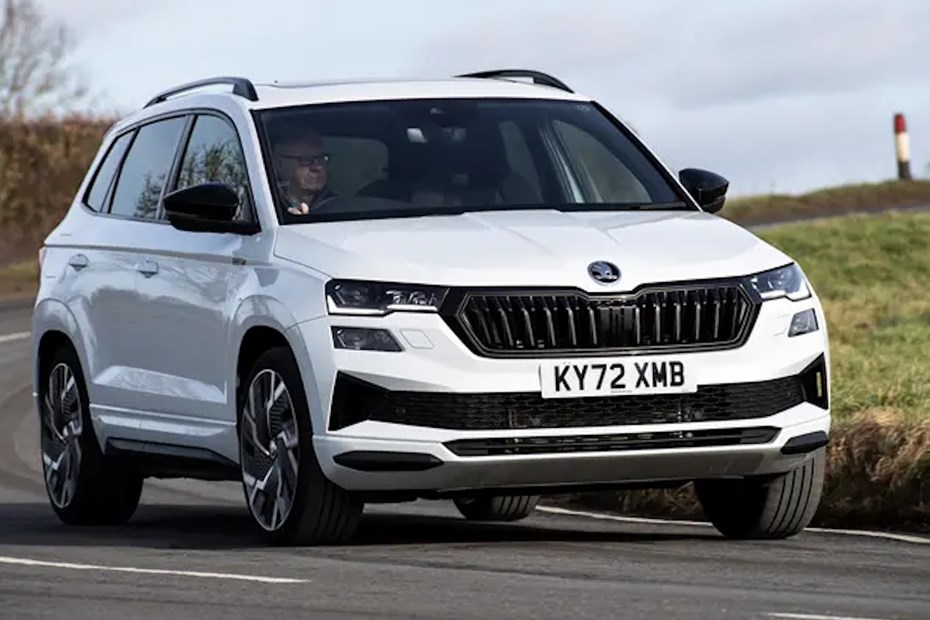
At a glance
| Price new | £30,940 - £45,030 |
|---|---|
| Used prices | £7,747 - £33,448 |
| Road tax cost | £195 - £620 |
| Insurance group | 10 - 26 |
Get an insurance quote with

|
|
| Fuel economy | 32.8 - 59.4 mpg |
| Range | 480 - 704 miles |
| Miles per pound | 4.8 - 7.6 |
| Number of doors | 5 |
| View full specs for a specific version | |
Available fuel types
Petrol
Diesel
Pros & cons
- Very comfortable interior
- Generous standard equipment
- Easy to drive with good visibility
- Not as sharp to drive as some rivals
- 1.0-litre petrol engine can struggle
- Lack of low-CO2 engine or hybrid
Skoda Karoq SUV rivals
Overview
The Skoda Karoq is a key competitor in the popular mid-size SUV market, and successor to the much-loved Yeti. The Karoq is a conventional design, based on the previous-generation Volkswagen Tiguan and is packed a plethora of features that help Skoda products stand out from the family car crowd. Expect to see a new model featuring its VW Group counterpart’s technology in 2025.
But for now, this one still has loads to recommend it if you’re after a five-seater family car that offers good value and plenty of comfort. Lightly facelifted in 2022, it still looks sharp and up-to date inside and out, despite how it’s getting on in years, and features the firm’s most efficient engines for excellent fuel economy, emissions, and competitive performance.
Being a competitor in one of the most hotly-contested classes in the market means the Karoq faces competent rivals from almost every other car manufacturer. Our favourite apart from the Skoda is the closely-related SEAT Ateca, which trades a few clever features for a more sporting chassis tune and a different kind of style. It’s difficult to discount the likes of the Kia Sportage and Hyundai Tucson though, which offer a cast-iron warranty, selection of hybrid powertrains and futuristic style – none of which the Karoq has.
Britain, meanwhile, seems to have cast its vote for the Nissan Qashqai, which is a perennial bestseller and a dependable choice. We reckon the Skoda’s a better overall package than any of these rivals, though. We’ve driven literally dozens of examples since it was launched, and you can find out more about how we test on Parkers via our dedicated explainer page. In addition to testing so many examples, we’ve also run one for six months in a long-term test to see how the Karoq is to live with.
Broadly speaking, it represents an excellent alternative to almost everything the others can throw at it. Although, with engine choice limited to conventional petrol and diesel motors, Skoda is looking a little out of touch with modern times – not even offering any form of hybrid capability. That said, the engines do have a number of clever tricks to help keep your eco-conscience clear.
Furthermore, a choice of manual and automatic transmissions, plus four-wheel drive on Karoq 4x4 models, makes for a well-rounded selection of versions. And with as much as 190hp it doesn’t struggle for performance. There are three current trim levels, covering most tastes: SE Drive, SE L and Sportline.
Now included is the option of an Eco pack that features seat coverings partially made from recycled plastic bottles, while slimmer LED headlights work even more effectively. Other tweaks, such as the optimised wheel covers and extended rear spoiler, improve the aerodynamics, helping the car achieve better mpg.
Over the next few pages, we’ll be thoroughly reviewing all aspects of the Skoda Karoq and rating them in our expert verdict. Along the way, we’ll consider the car’s driving experience, the quality and comfort of its interior, the level of practicality available and how much it’ll cost you to keep it on the road.



